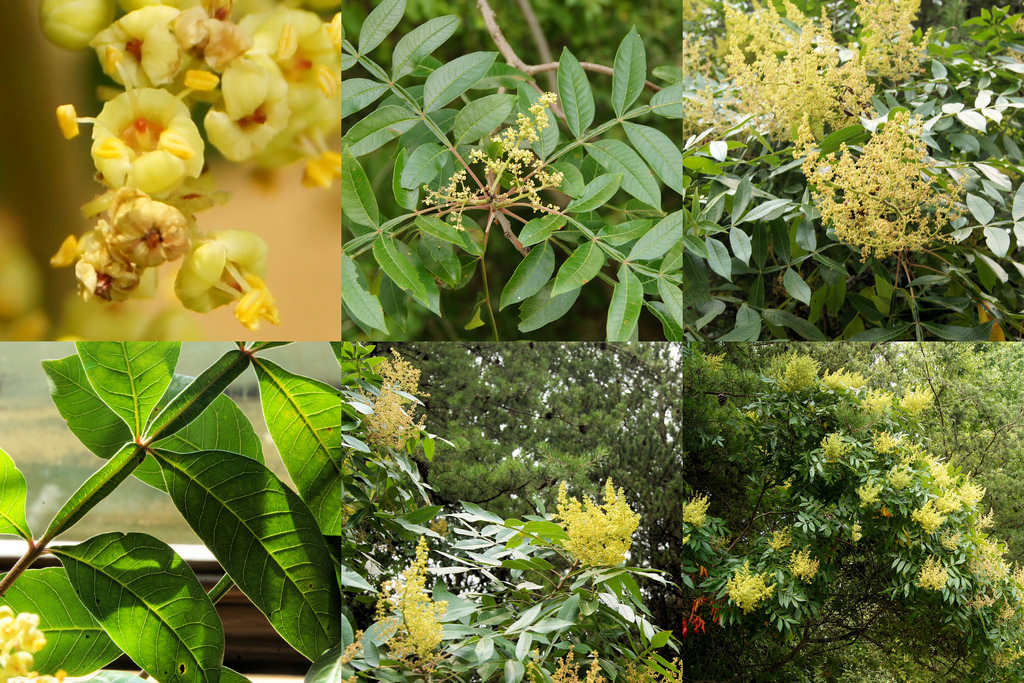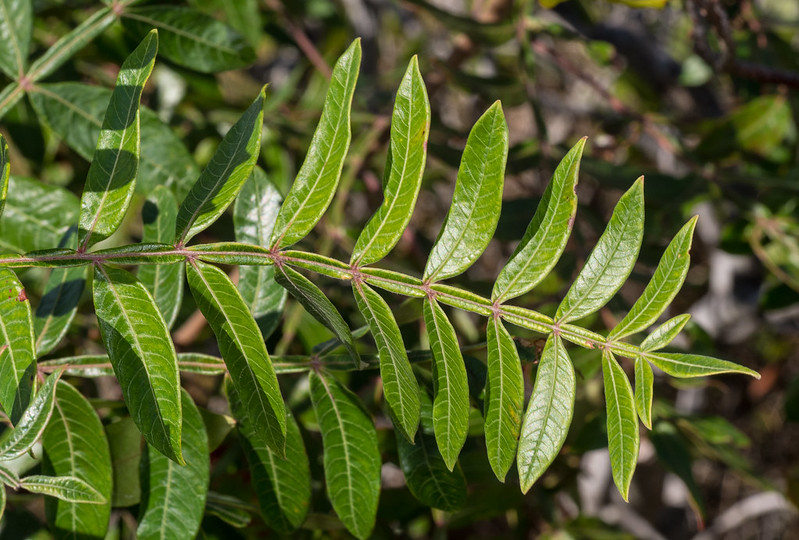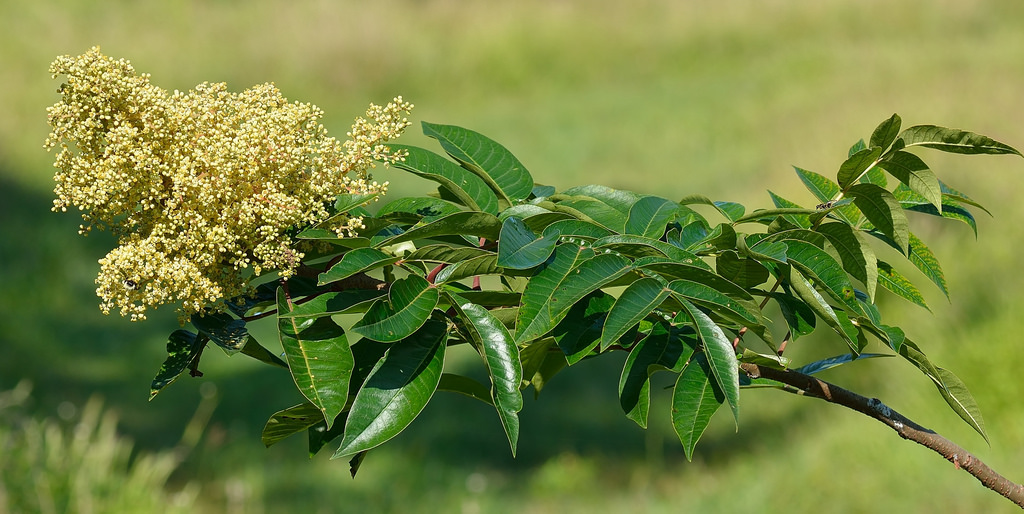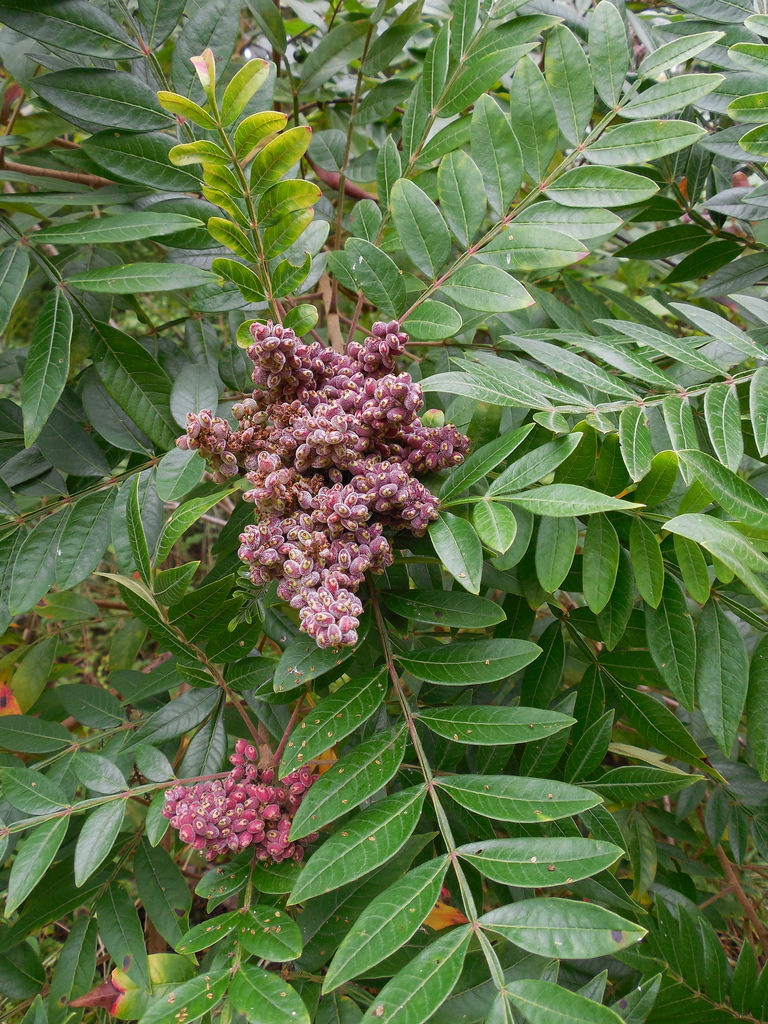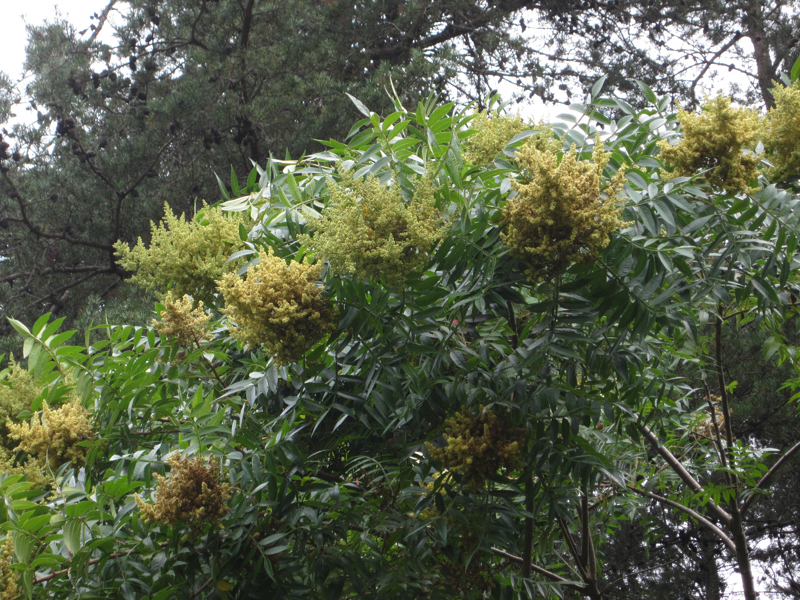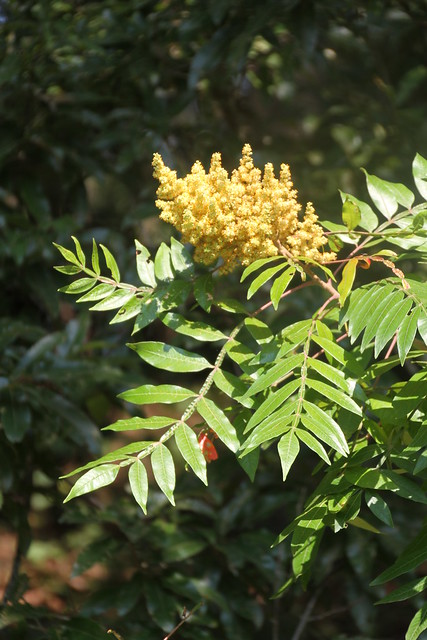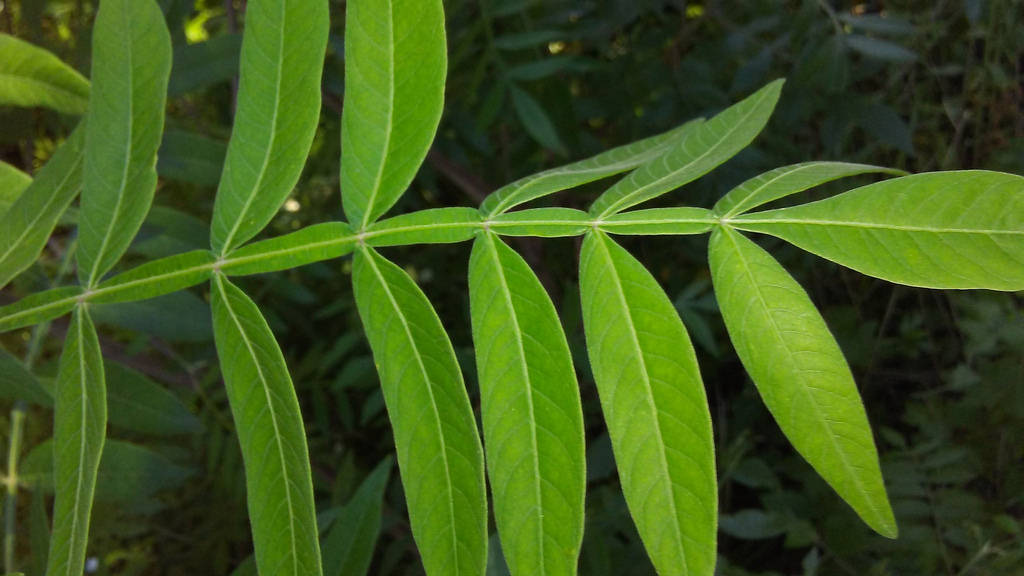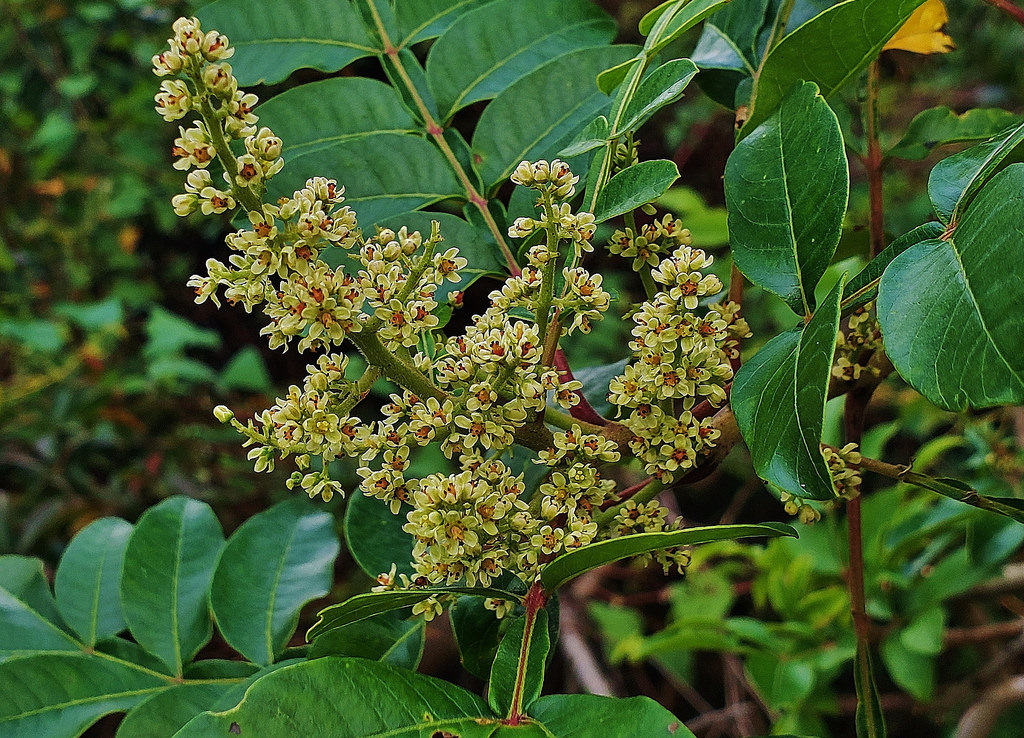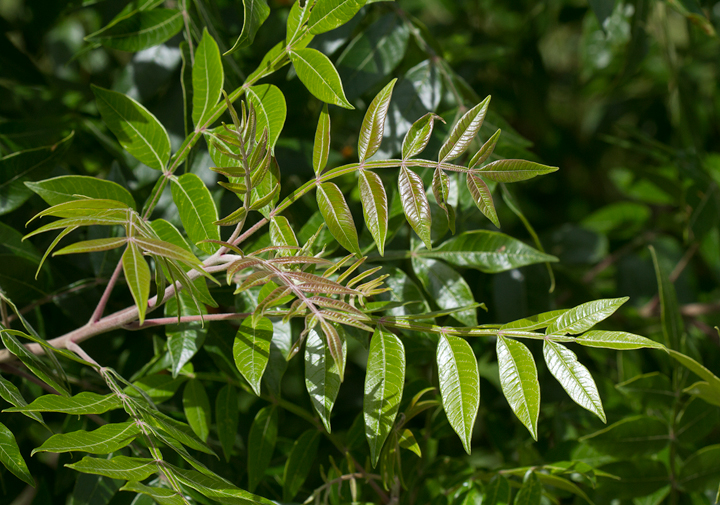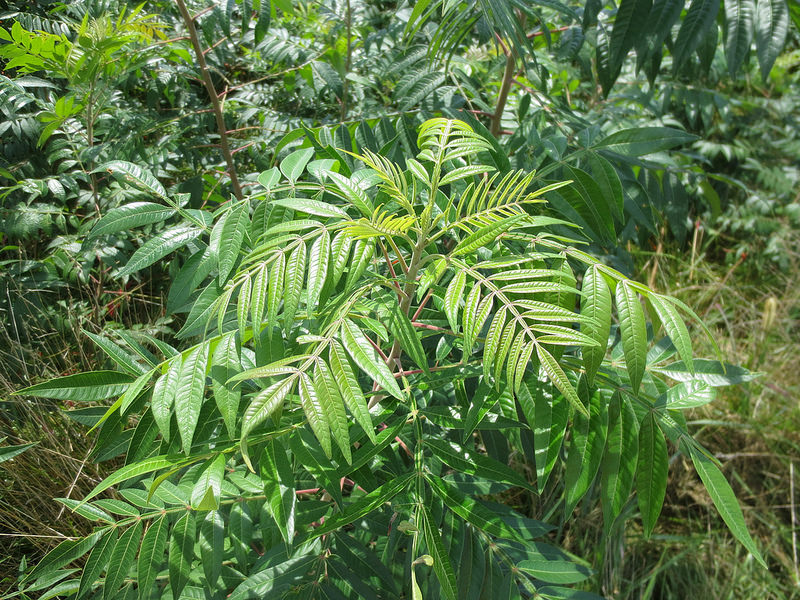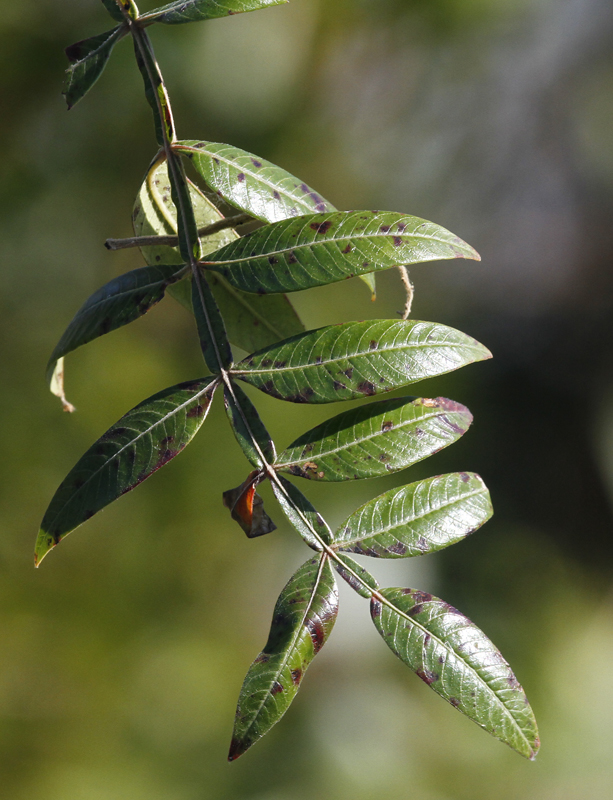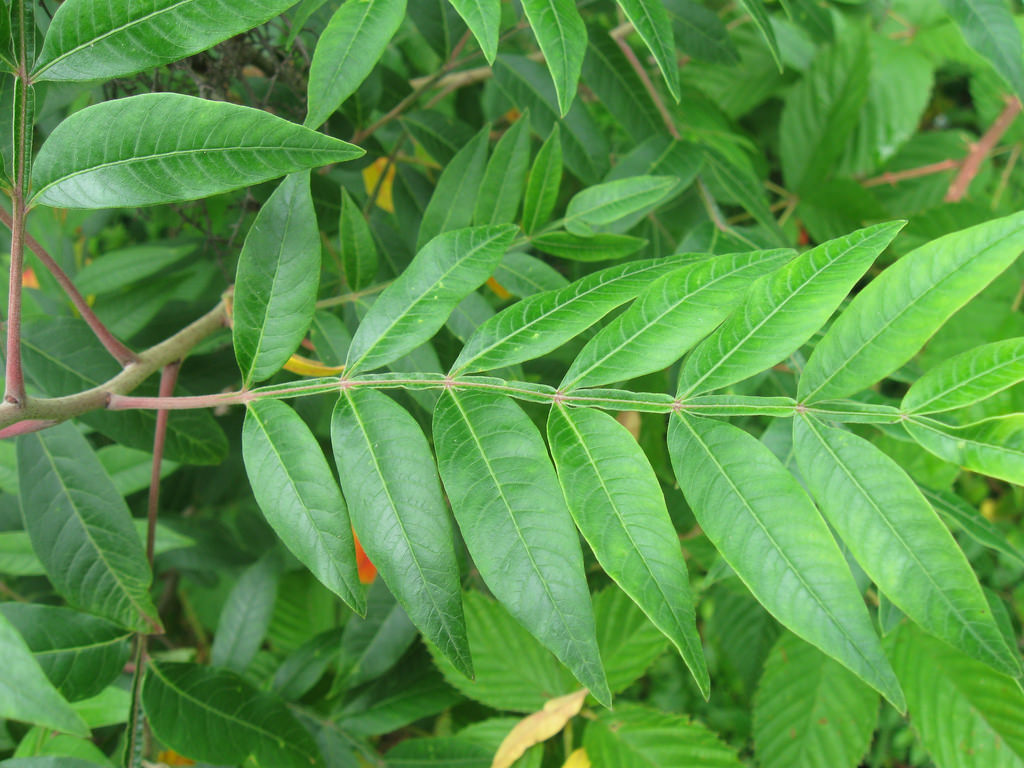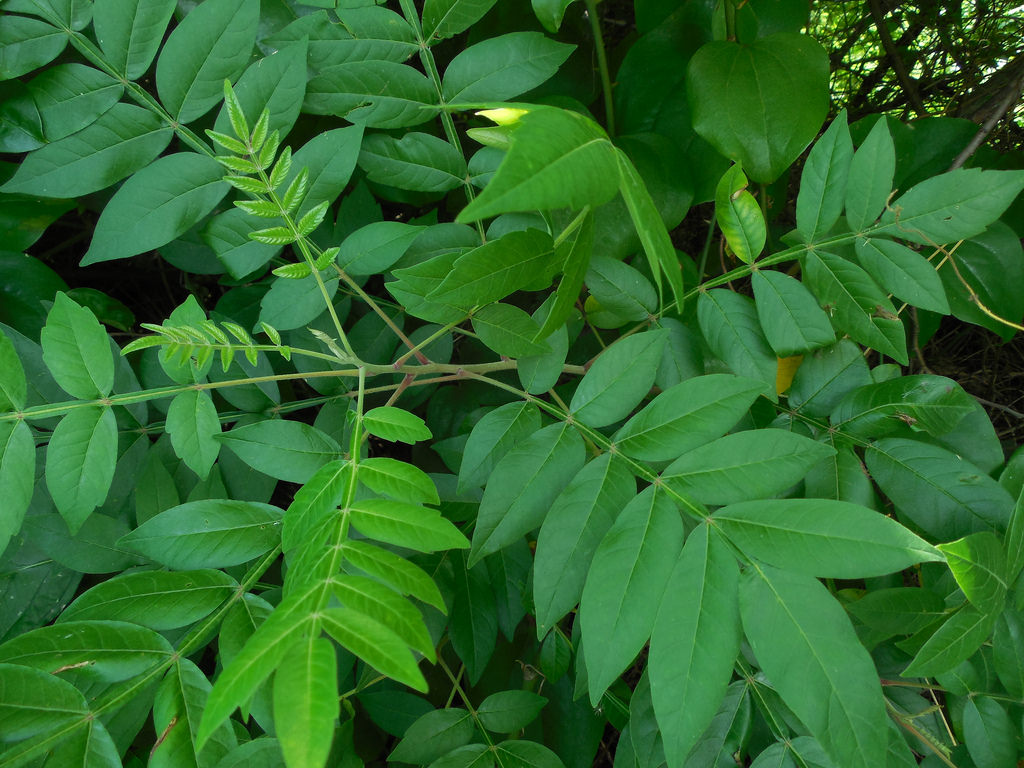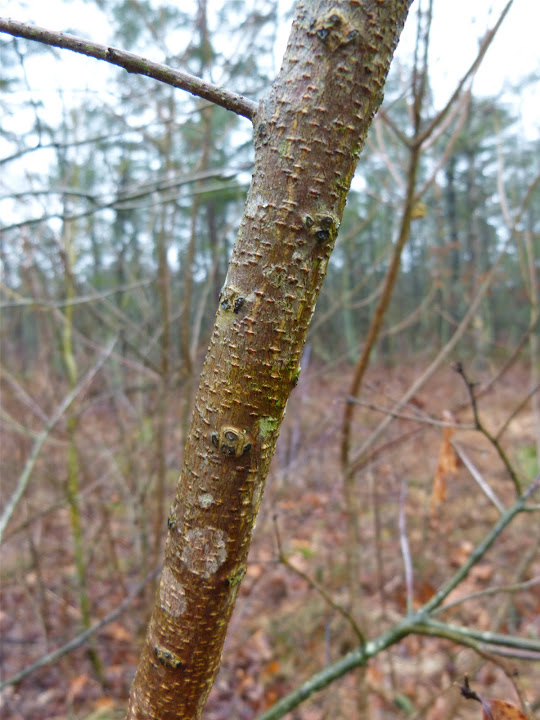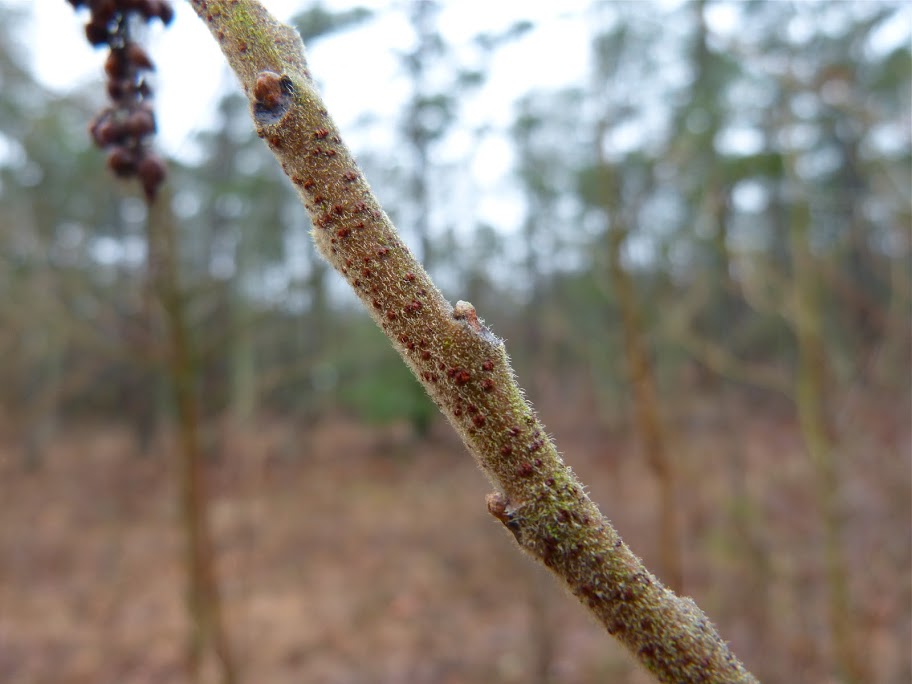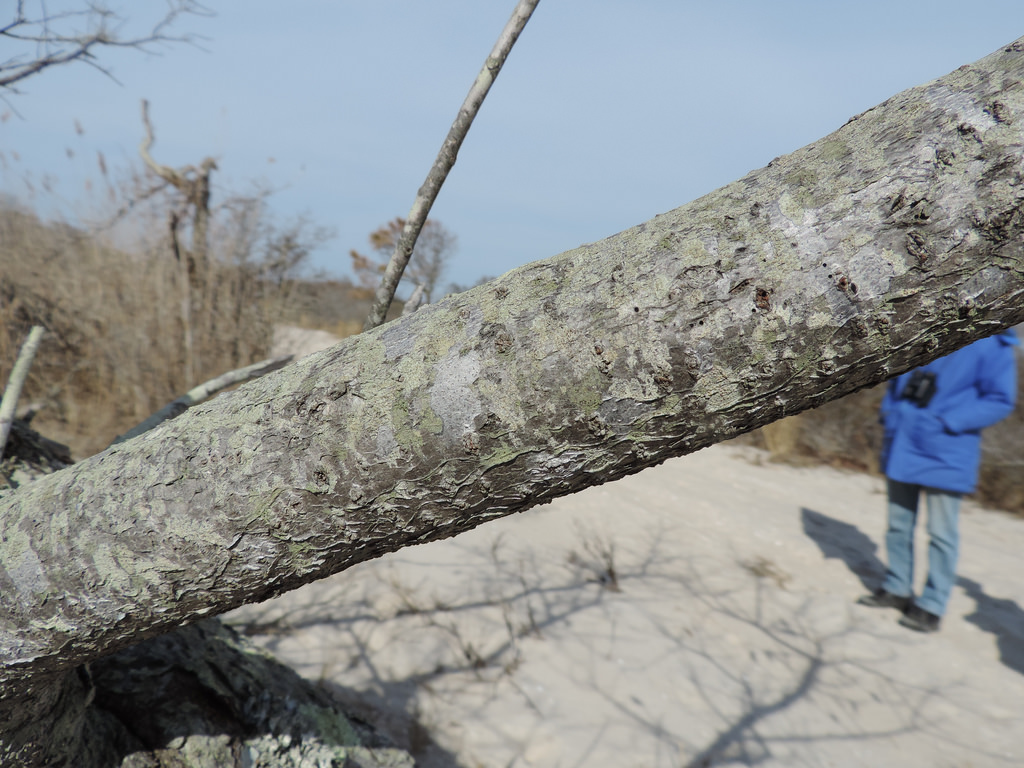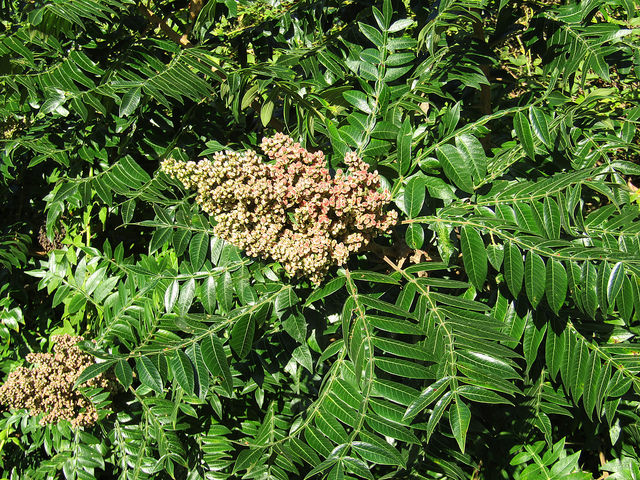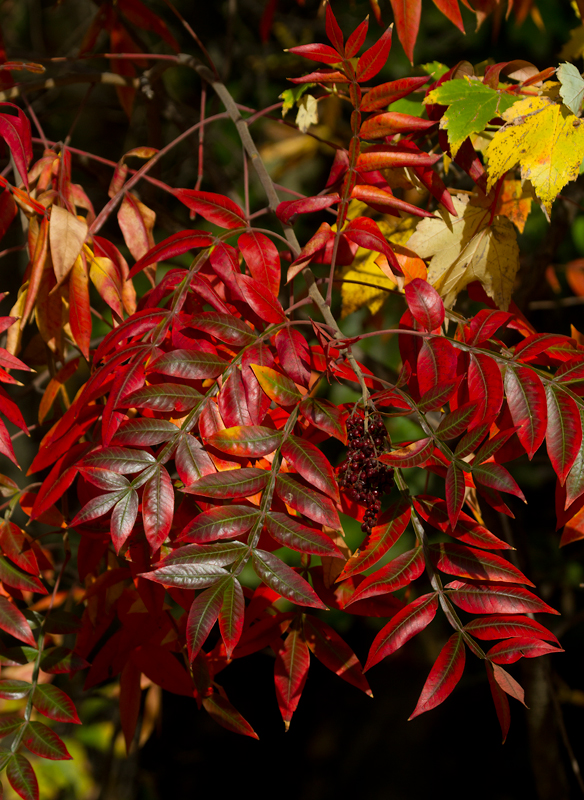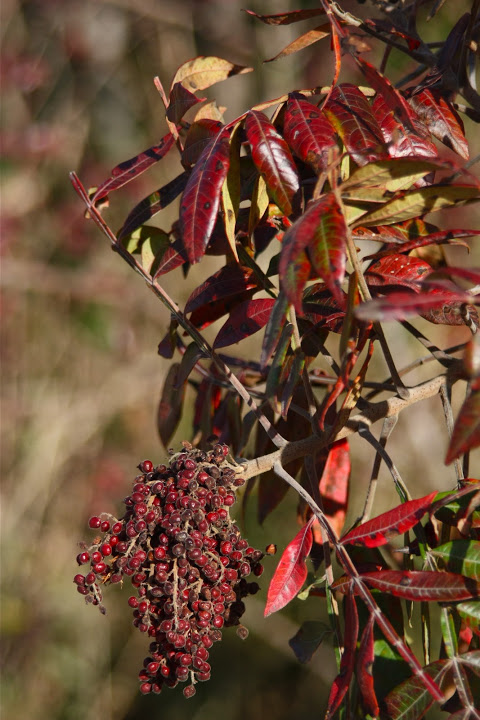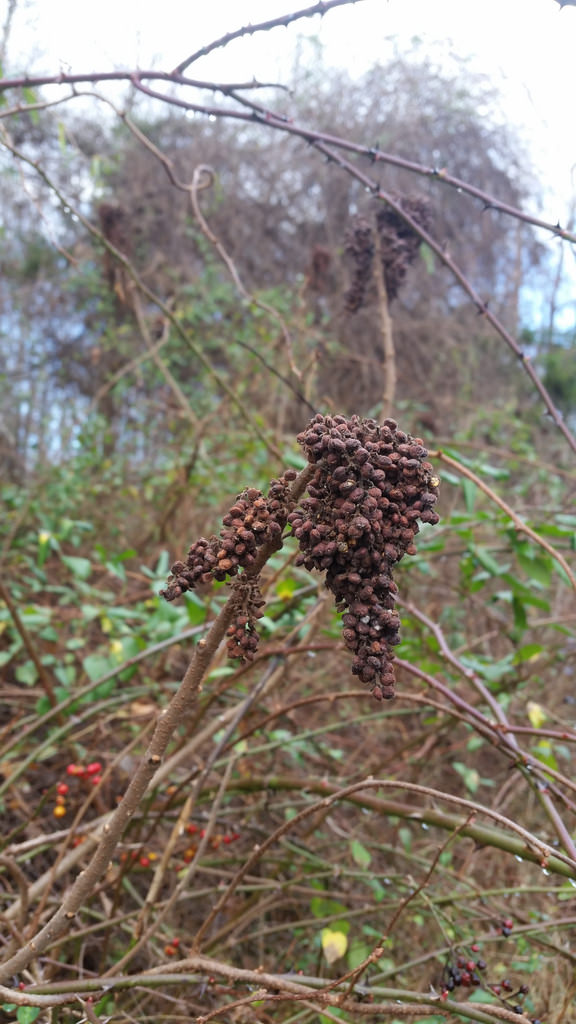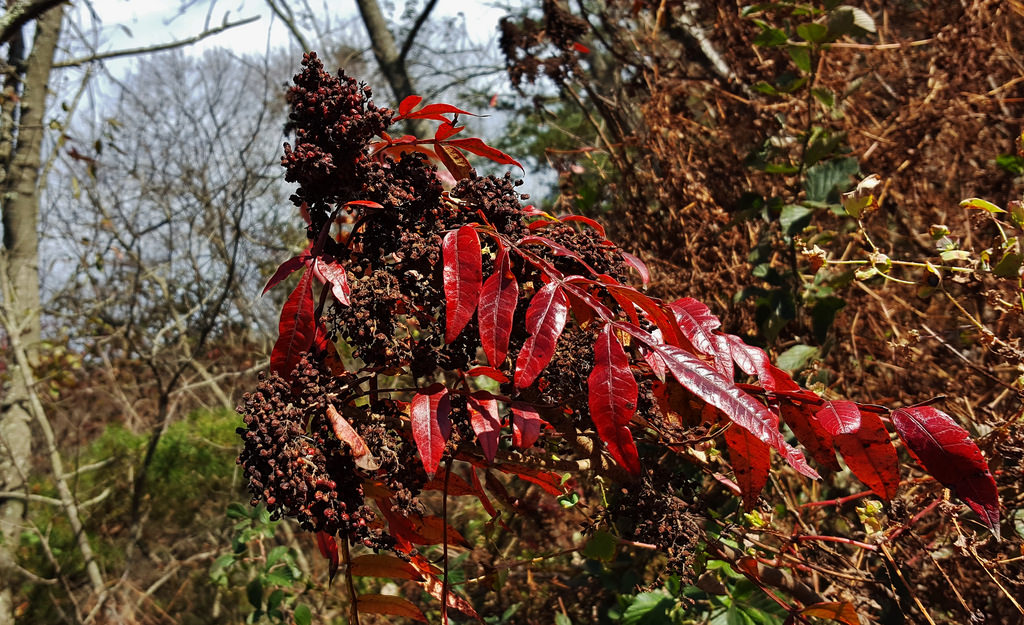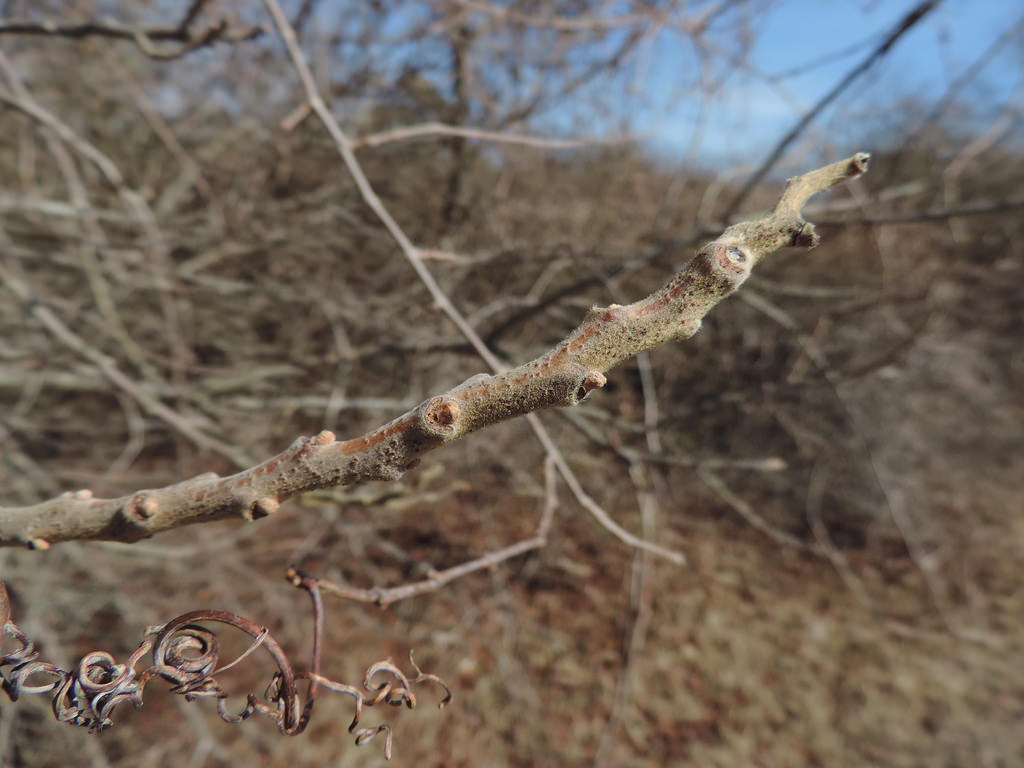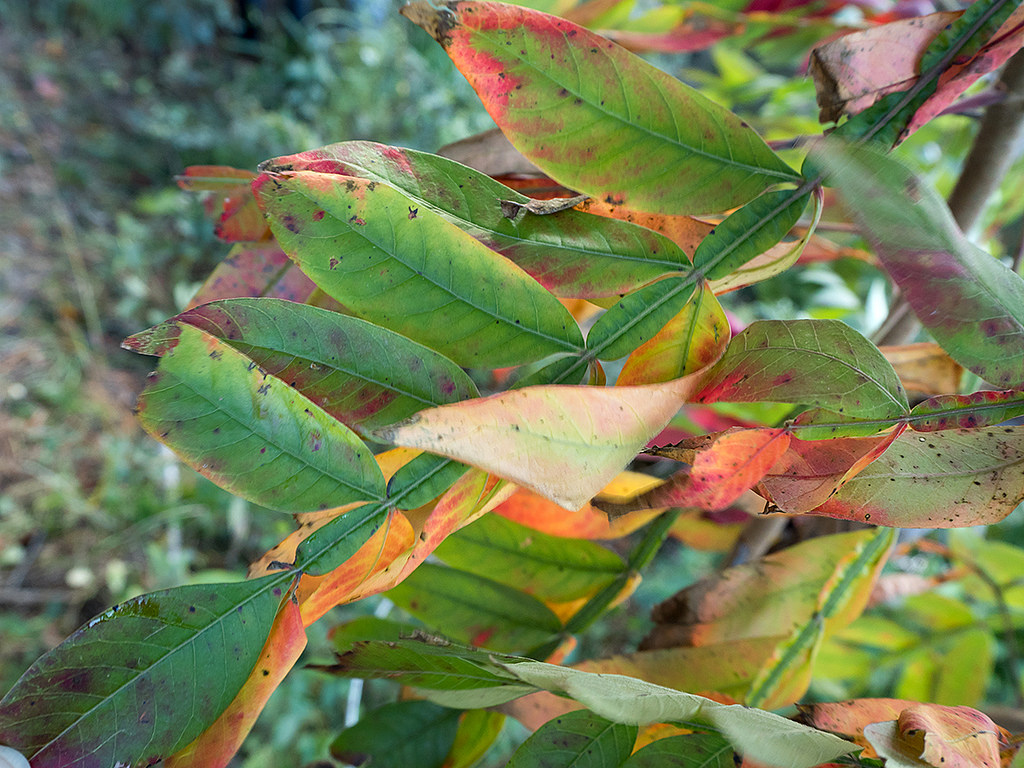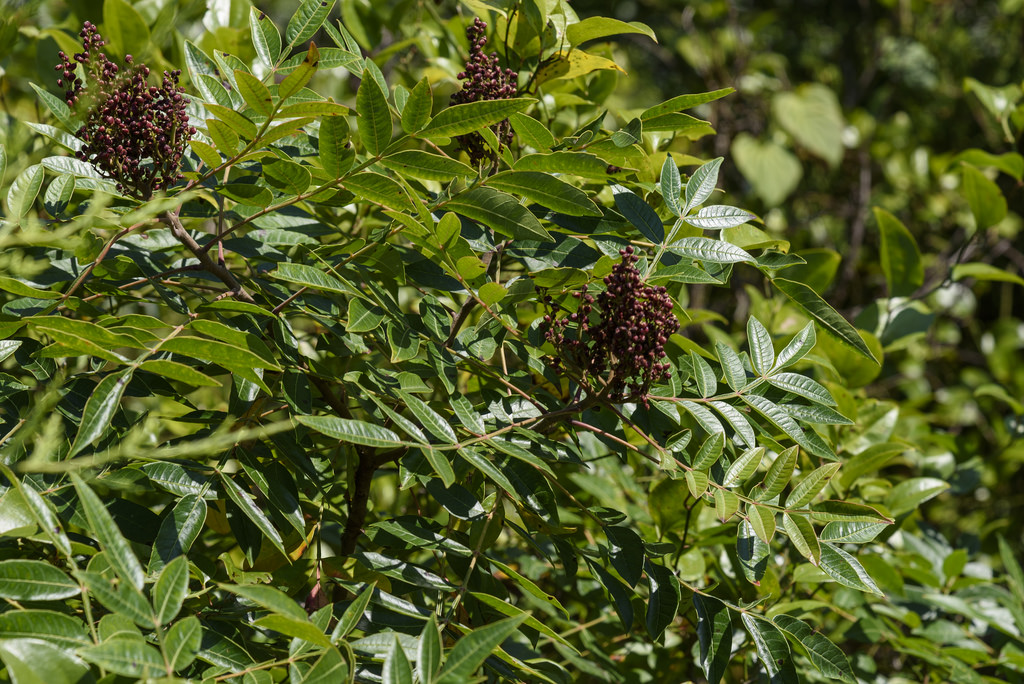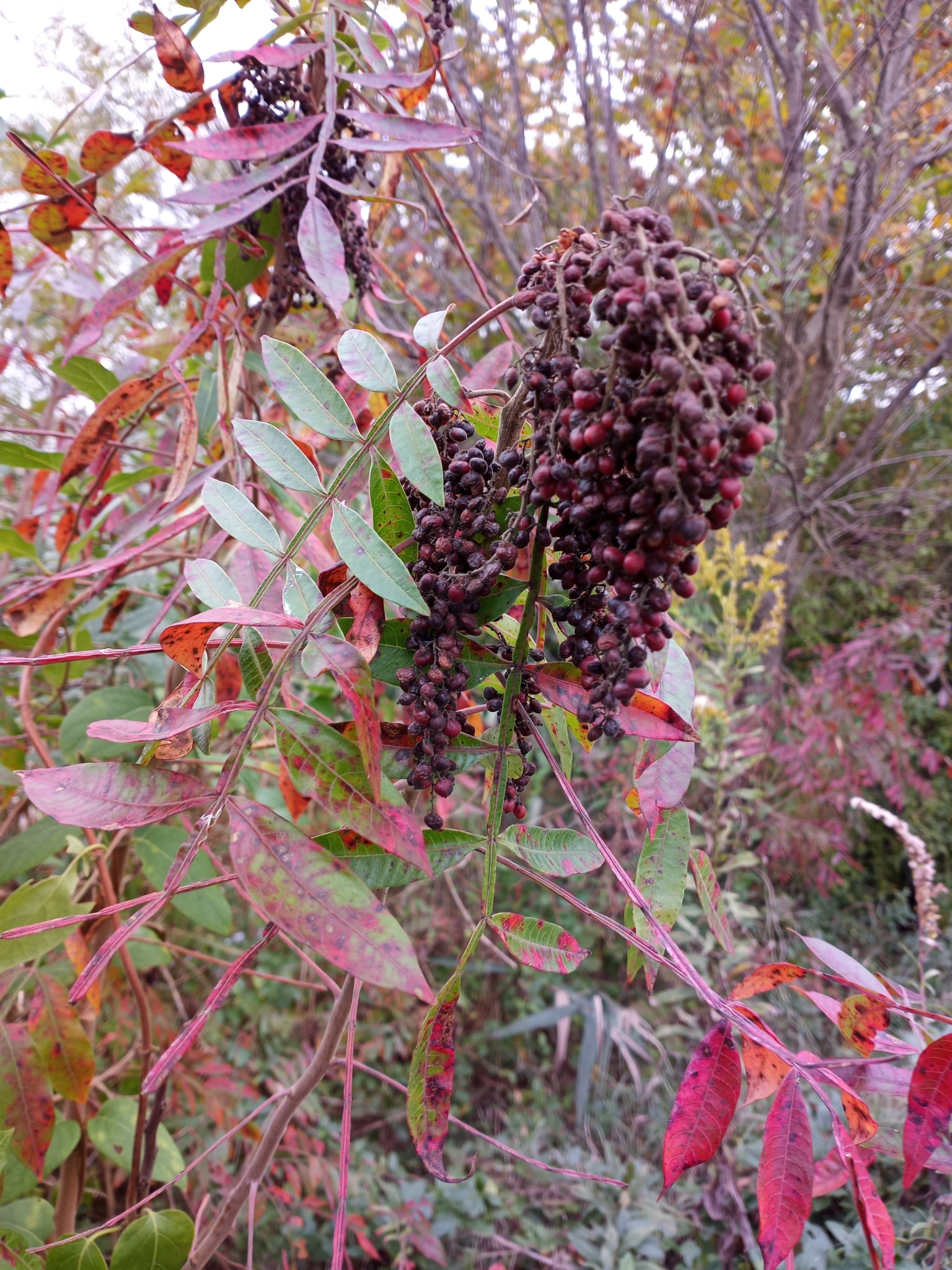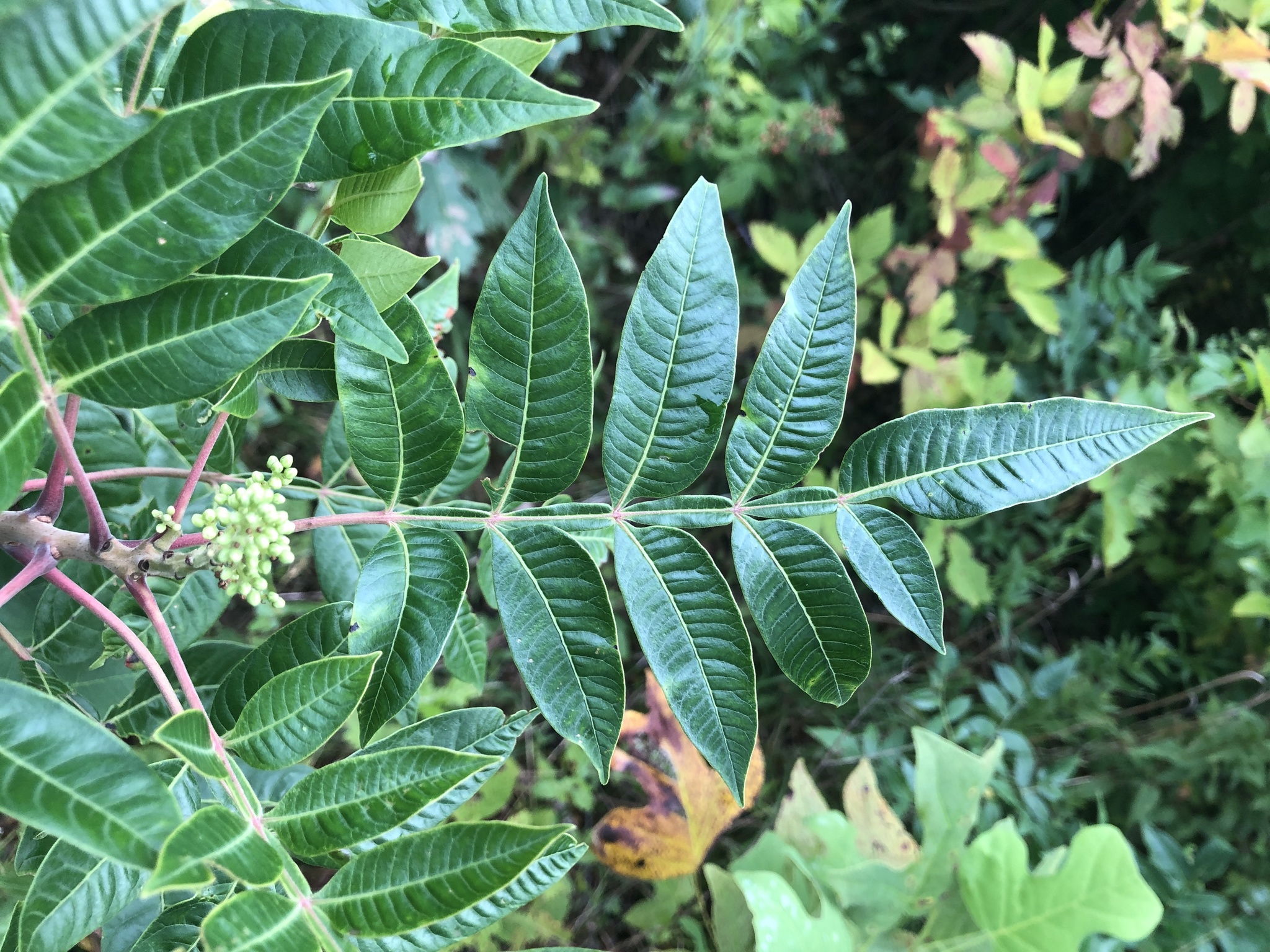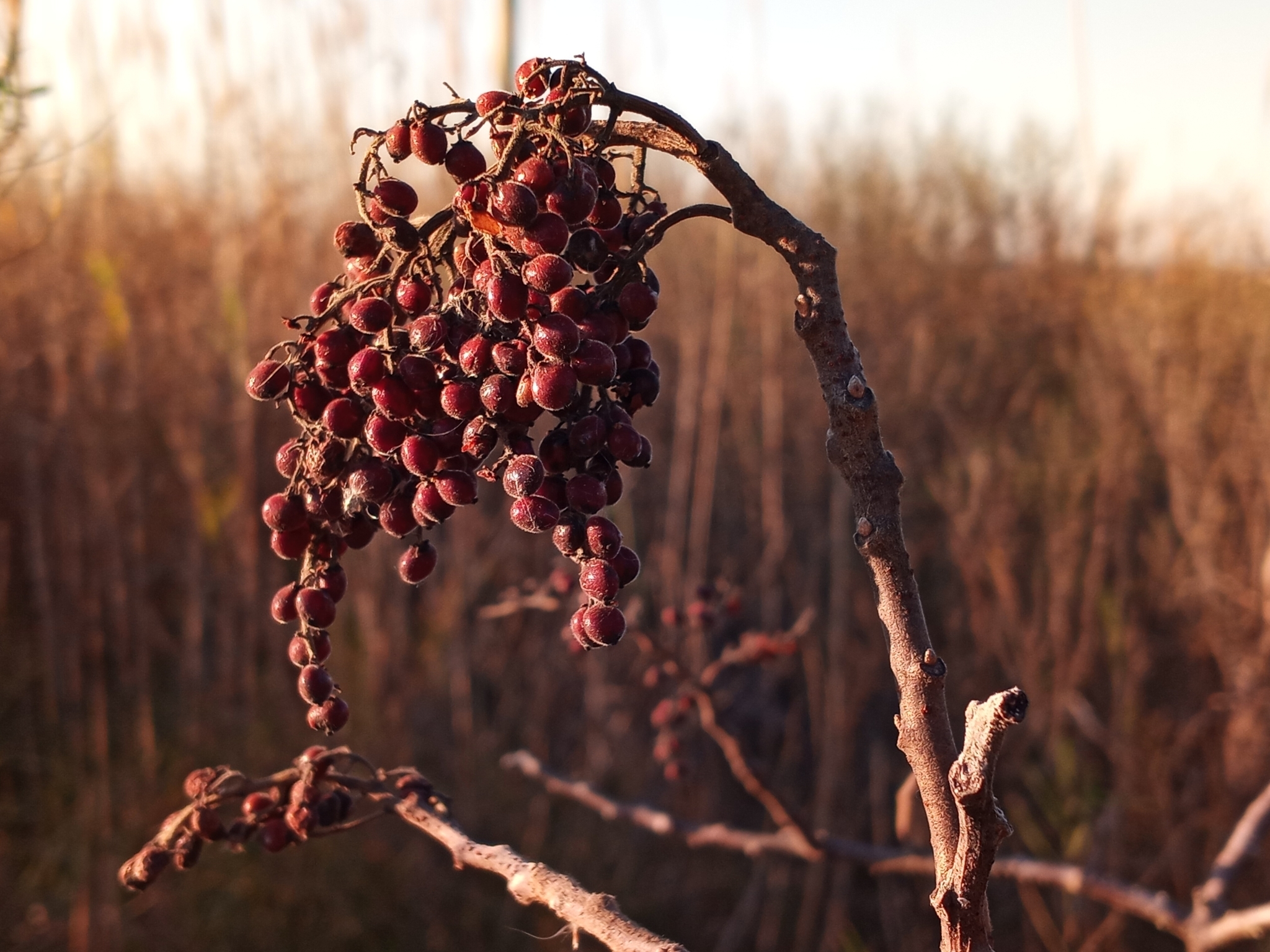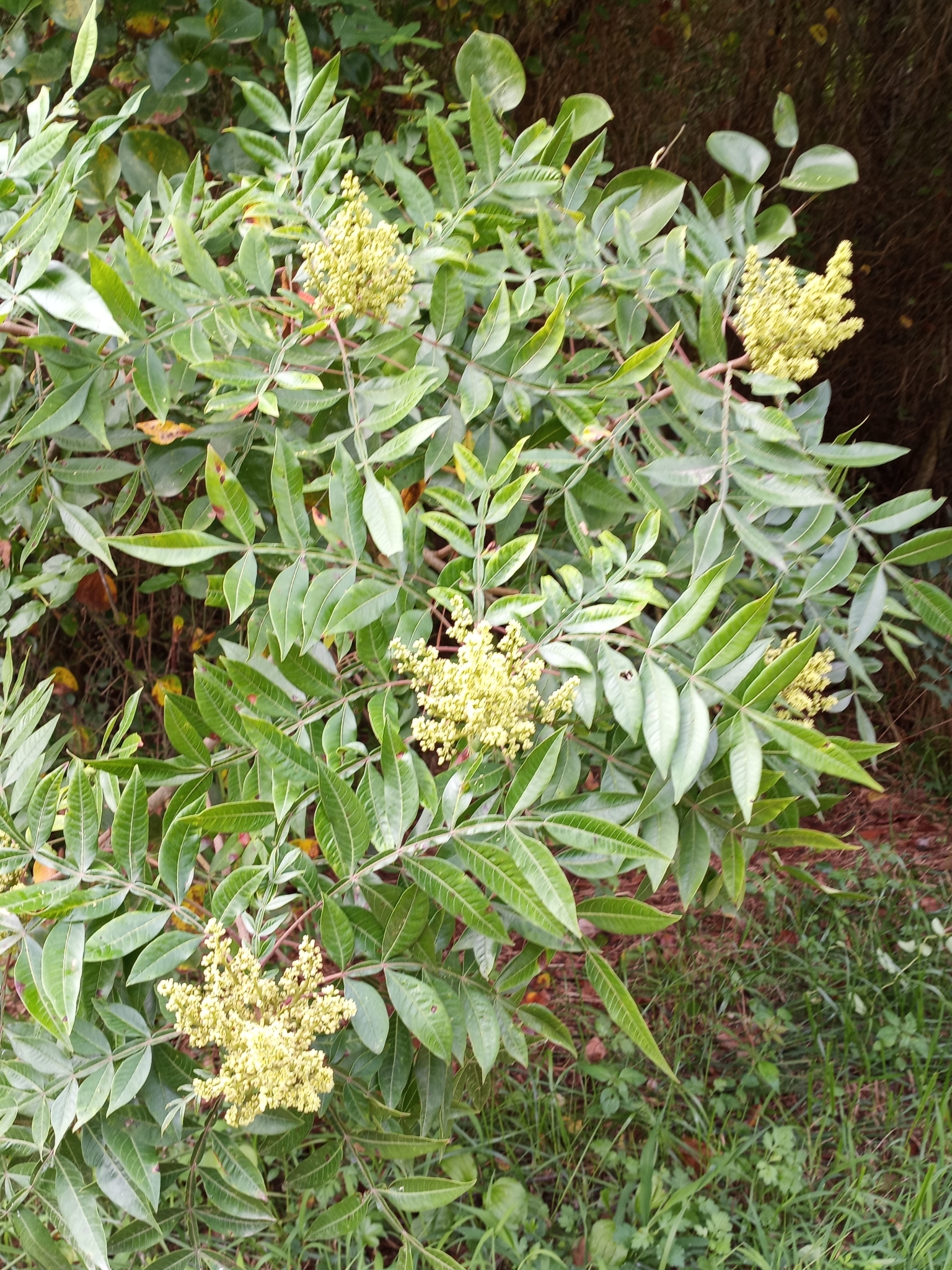Winged Sumac in Anne Arundel Co., Maryland (7/22/2011).
Winged Sumac in Worcester Co., Maryland (9/26/2022).
Winged Sumac flowering on Assateague Island, Maryland (8/19/2012).
Winged Sumac in Howard Co., Maryland (8/27/2014).
Winged Sumac in Kent Co., Maryland (9/13/2013).
Winged Sumac in Caroline Co., Maryland (8/10/2016).
Winged Sumac in Anne Arundel Co., Maryland (8/16/2016).
Winged Sumac in Howard Co., Maryland (8/25/2012).
Winged Sumac blooming in Calvert Co., Maryland (8/20/2013).
Winged Sumac growing in Calvert Co., Maryland (6/9/2017).
Winged Sumac blooming in Anne Arundel Co., Maryland (9/1/2018).
Winged Sumac in Worcester Co., Maryland (6/17/2012).
Winged Sumac in St. Mary's Co., Maryland (8/15/2015).
Winged Sumac in Worcester Co., Maryland (11/14/2015).
Winged Sumac in Caroline Co., Maryland (7/4/2016).
Winged Sumac in Kent Co., Maryland (7/5/2016).
The trunk of a Winged Sumac in Worcester Co., Maryland (2/23/2013).
The pubescent branches of Winged Sumac in Worcester Co., Maryland (2/23/2013).
Winged Sumac in Caroline Co., Maryland (9/1/2020). (c) Wayne Longbottom, some rights reserved (CC BY-NC ).
A large Winged Sumac branch on Assateague Island, Worcester Co., Maryland (2/20/2016).
Winged Sumac in Caroline Co., Maryland (8/23/2016).
Winged Sumac at Fort Smallwood Park, Maryland (10/20/2012).
Winged Sumac in Wicomico Co., Maryland (10/20/2012).
Winged Sumac (winter aspect) in Anne Arundel Co., Maryland (1/15/2016).
Winged Sumac (winter aspect) in Baltimore Co., Maryland (12/31/2015).
Winged Sumac in Anne Arundel Co., Maryland (10/26/2017).
A Winged Sumac branch in winter in Worcester Co., Maryland (2/20/2016).
Winged Sumac in Worcester Co., Maryland (10/22/2016).
Winged Sumac in Montgomery Co., Maryland (8/30/2016).
Winged Sumac in Queen Anne's Co., Maryland (10/4/2020). (c) Wayne Longbottom, some rights reserved (CC BY-NC ).
Winged Sumac in Caroline Co., Maryland (11/1/2020). (c) Wayne Longbottom, some rights reserved (CC BY-NC ).
Winged Sumac in Prince George's Co., Maryland (7/31/2020). (c) johnbotany, some rights reserved (CC BY-NC ).
Winged Sumac in Talbot Co., Maryland (12/6/2020). (c) Wayne Longbottom, some rights reserved (CC BY-NC ).
Winged Sumac in Caroline Co., Maryland (8/21/2021). (c) Wayne Longbottom, some rights reserved (CC BY-NC ).
Winged Sumac hosting a Brown Thrasher on Assateague Island, Maryland (1/1/2014).
Winged Sumac in Dorchester Co., Maryland (1/28/2017).
Previous
Next
Status A shrub or small tree that is very common on the Coastal Plain.
Description Opposite, pinnately compound leaves; rachises have wings 1-5 mm wide between the leaflets, making for easy identification. In winter, note drooping fruit clusters.
Where To Find Hedgerows and wooded edges in open sun. Common in maritime dune forests, such as at Assateague Island National Seashore. Also occurs in old fields and successional forests.
Relationships This species and other members of the sumac genus (Rhus Sumac Flea Beetle . Other beetle species that use Winged Sumac as a host plant include the leaf-rolling weevil Synolabus nigripes Calophya nigripennis Red-banded Hairstreak (Databse of World's Lepidopteran Host Plants).Regal Moth , Luna Moth , Variable Antepione Moth , Angle-winged Emerald Moth , Showy Emerald Moth , Red-fronted Emerald Moth , Sumac Leafblotch Miner Moth , Striped Sumac Leafroller Moth , Variegated Cutworm Moth , Yellow-haired Dagger Moth , Smeared Dagger Moth and Spotted Datana Moth (BugGuide & Database of World's Lepidopteran Host
Plants).The moth species Stigmella intermedia
Use of media featured on Maryland Biodiversity Project is only permitted with express permission of the photographer.
Winged Sumac in Worcester Co., Maryland (6/17/2012).
Media by
Bill Hubick .
The trunk of a Winged Sumac in Worcester Co., Maryland (2/23/2013).
Media by
Jim Brighton .
Wikipedia content unavailable for this taxon.

























